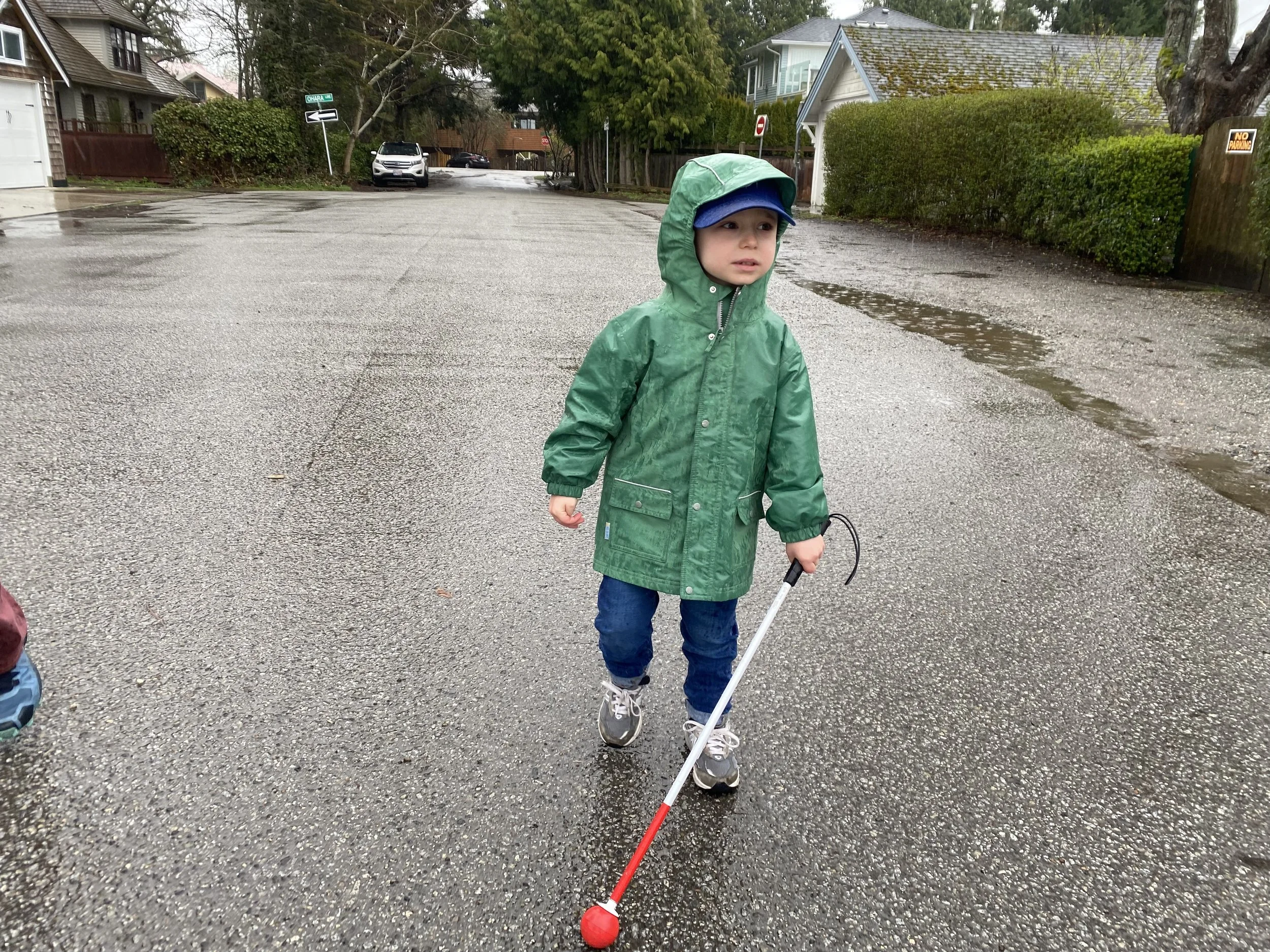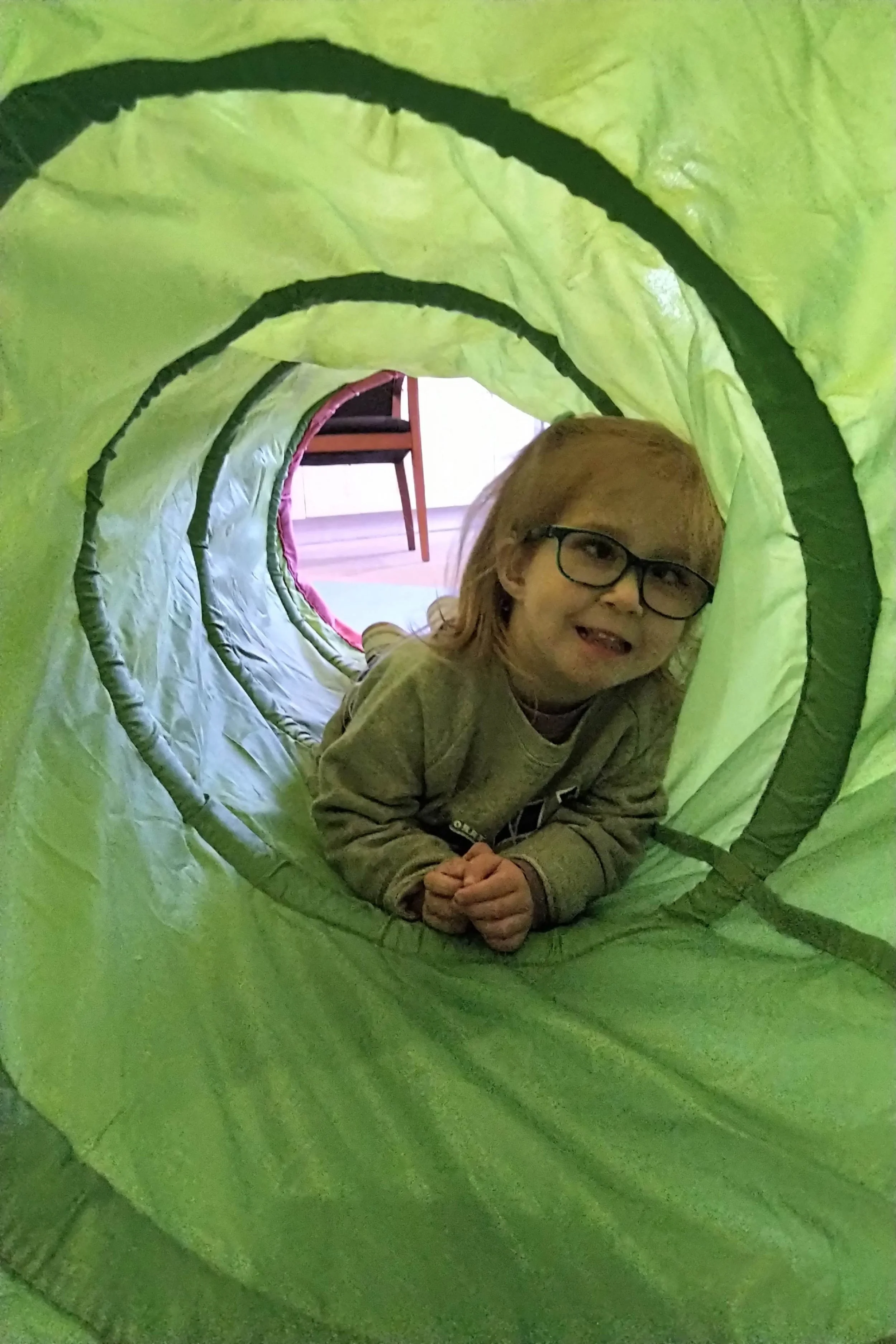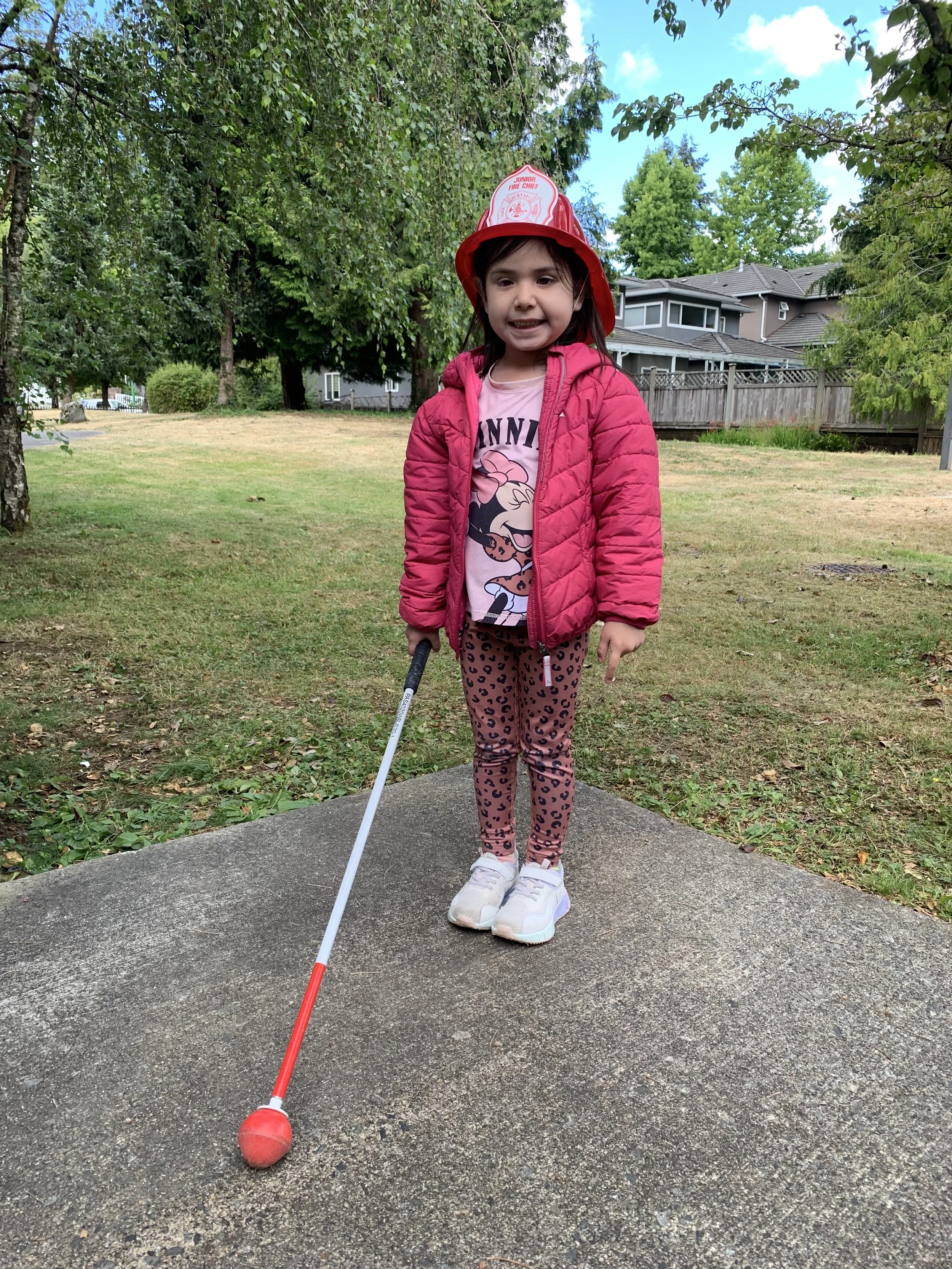Safe Travel Education for Pre-Schoolers
The Safe Travel Education for Pre-schoolers (STEP) Program is Blind Beginnings’ unique summer intensive program designed to equip children who are blind or partially sighted, aged 4-5, with foundational mobility and independence skills. This one-of-a-kind program sets young participants on a path to take their very first independent steps – both literally and figuratively – safely and confidently.
For many children with vision loss, learning to move safely and independently is a critical developmental milestone that often requires specialized support. Developmentally, children with visual impairment/blindness can be 1 to 1.5 years behind their sighted peers in movement skills and age-appropriate, safe travel. This gap can lead to a lack of confidence and initiative to explore their surroundings.
Unfortunately, there's a significant lack of dedicated Orientation & Mobility (O&M) training services for young children with visual impairments in British Columbia, with positions at other organizations having been discontinued. Without early intervention, children often grow up hesitant to try new experiences, impacting their self-confidence, physical health, and social-emotional well-being. Parents may also struggle, unsure how to teach safe movement or adapt activities for their child with vision loss. The STEP program directly addresses these critical needs.
Understanding Orientation & Mobility
The STEP program focuses on building comprehensive Orientation & Mobility skills, which are vital for independent travel. O&M encompasses two key areas:
Orientation
This is "the thinking part of travel". It involves knowing where you are and where you are going, learning to use and apply multiple senses (sight, sound, touch, smell, even echo location), developing concepts like understanding directions or how a traffic light works, and gaining knowledge about safety.
Mobility
This is "the physical part of travel". It includes developing balance, agility, walking and running gait, adaptive pre-cane skills, and the potential skill development and use of a white cane4. As one parent noted, the program helps children view a white cane as a valuable "tool in the toolbox".
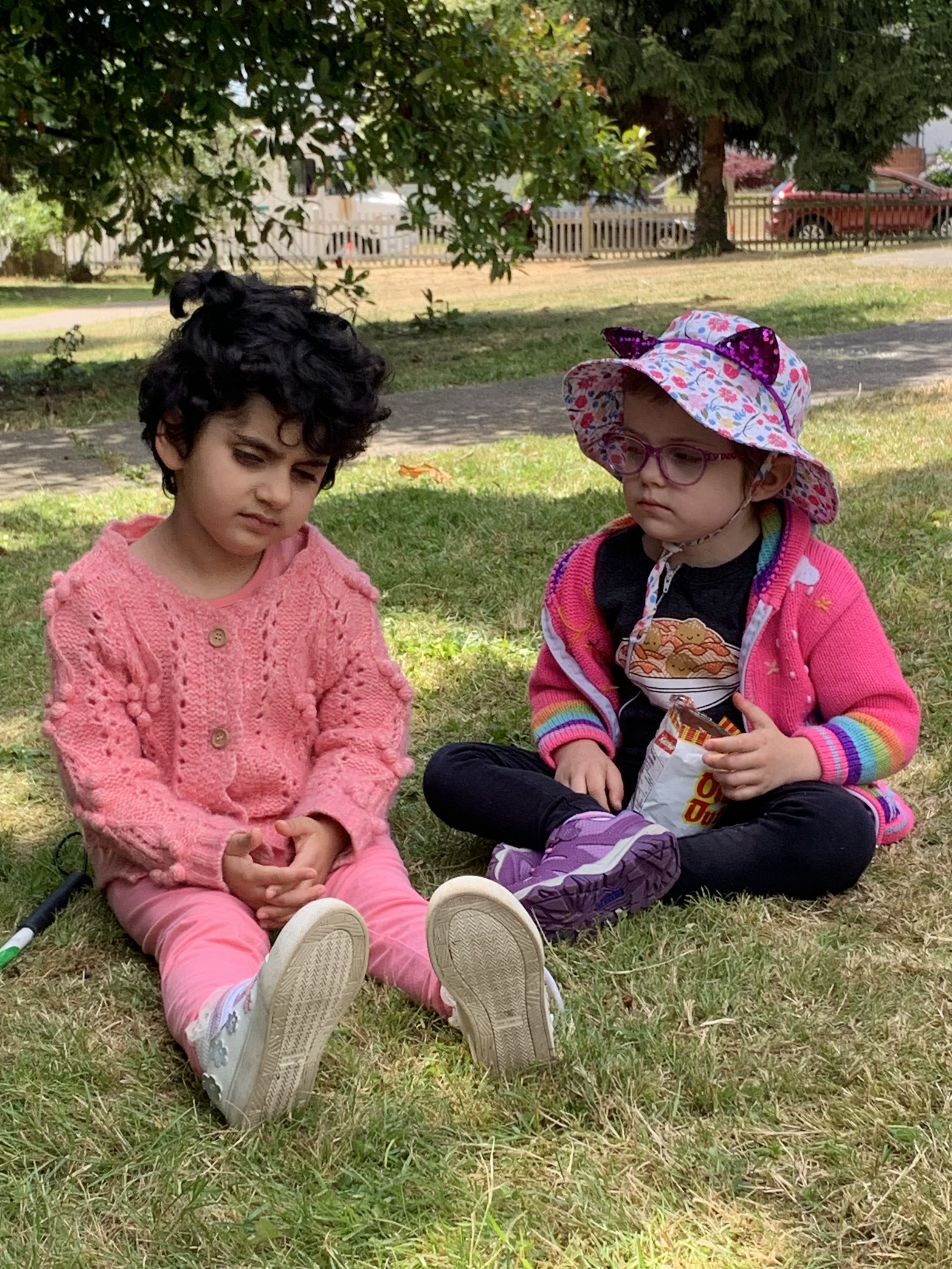



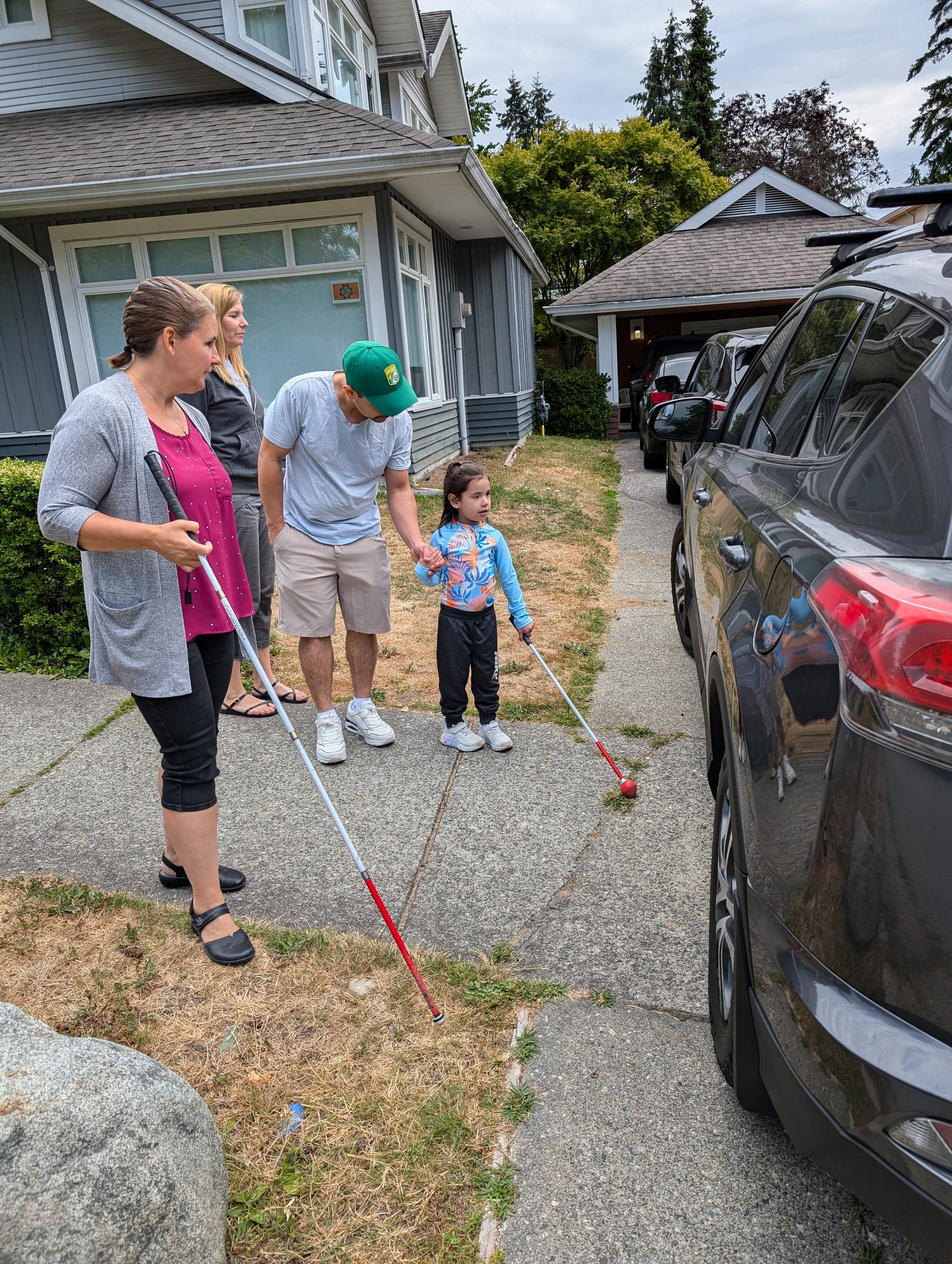



STEP features a dynamic structure that blends in-house learning with real-world application. Participants engage in in-house stations and activities that include sensory awareness, concept development, and movement and spatial awareness games. These are all designed to enhance children’s use of all senses, build an understanding of the world around them, and develop physical coordination.
STEP also expands into the community with various outings and individualized/small group O&M training. These include:
Neighborhood Exploration
Mall Travel and Exploration
Park Play
Transit Travel
The STEP Program delivers profound benefits, empowering children and families alike.
For Children
Increased Confidence: Children gain the courage to explore their surroundings and try new activities. As a parent shared about their son after the camp, "I saw him gain so much confidence, and even his teachers and support team have noticed a difference since we have come home."
Developed Mobility Skills: They build crucial body and spatial awareness, improving gross and fine motor skills necessary for fitness, wellness, and independent living.
Positive Association with Mobility Aids: Young children are introduced to tools like the white cane in a positive, empowering way. One parent excitedly recounted how their son "got to hold and try using a white cane for the first time and he was obsessed! He was saying 'sweep, sweep, sweep' for days afterward and it was incredible to watch him feel some mastery over his environment with the help of this mobility aid.”
For Parents
Reduced Isolation & Stronger Networks: Parents connect with other families navigating similar journeys, fostering a vital community of support and understanding.... As one parent stated, "It was so great to meet and connect with other families as well.”
Raised Expectations: By observing their children thrive, parents gain a new understanding of their child's capabilities. A parent beautifully expressed, "I think it really broadened her understanding of what is possible for our child, and to remember that his blindness doesn’t dictate what he can do.”
Practical Strategies: Parents learn effective ways to support their child's developmental milestones and make everyday experiences meaningful and accessible.
This program requires ongoing funding and support in order to provide these crucial skills for pre-schoolers who are blind or partially sighted.



